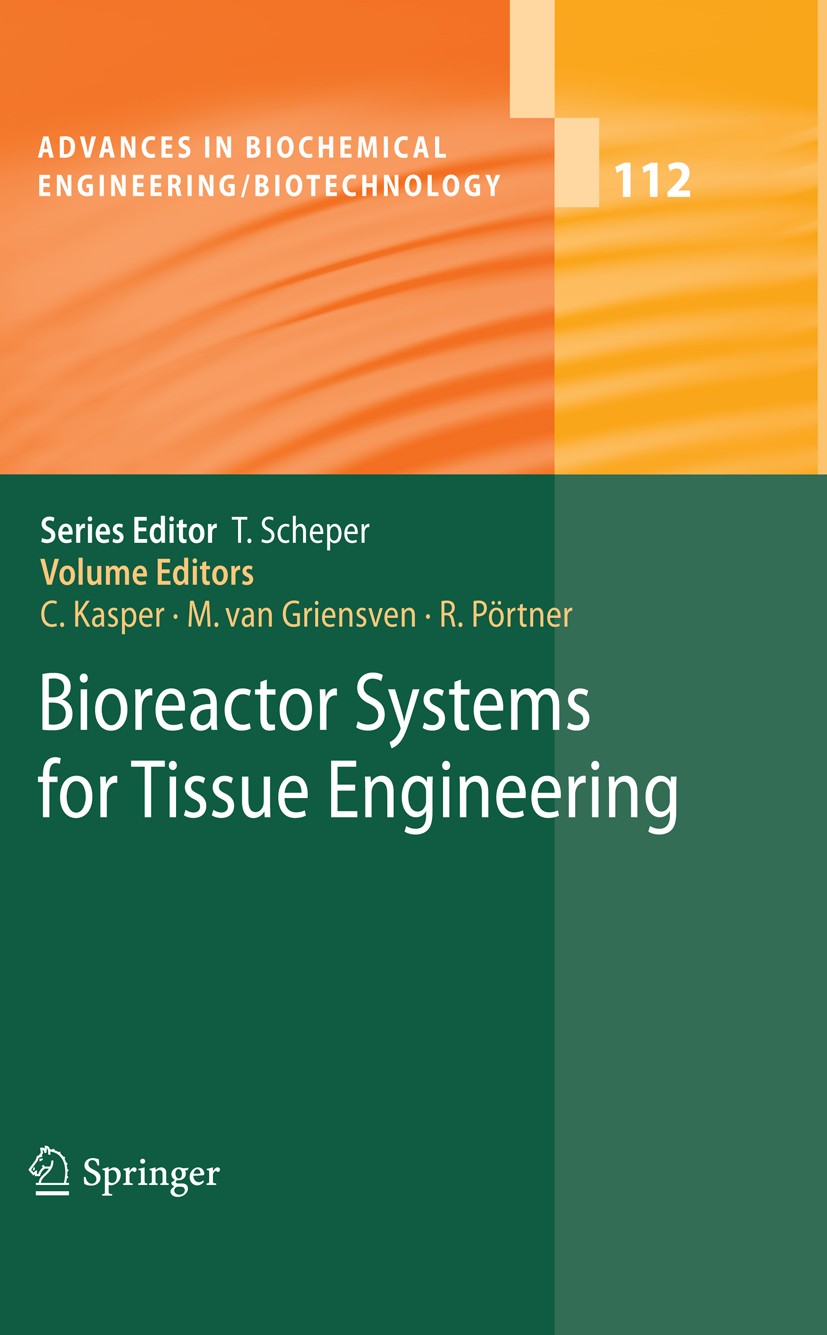| 期刊全称 | Bioreactor Systems for Tissue Engineering | | 影响因子2023 | Cornelia Kasper,Martijn Griensven,Ralf Pörtner | | 视频video | http://file.papertrans.cn/189/188473/188473.mp4 | | 发行地址 | Covers trends in modern biotechnology.All aspects of this interdisciplinary technology, where knowledge, methods and expertise are required from chemistry, biochemistry, microbiology, genetics, chemic | | 学科分类 | Advances in Biochemical Engineering/Biotechnology | | 图书封面 |  | | 影响因子 | The editors of this special volume would first like to thank all authors for their excellent contributions. We would also like to thank Prof. Dr. Thomas Scheper, Dr. Marion Hertel and Ulrike Kreusel for providing the opportunity to compose this volume and Springer for organizational and technical support. Tissue engineering represents one of the major emerging fields in modern b- technology; it combines different subjects ranging from biological and material sciences to engineering and clinical disciplines. The aim of tissue engineering is the development of therapeutic approaches to substitute diseased organs or tissues or improve their function. Therefore, three dimensional biocompatible materials are seeded with cells and cultivated in suitable systems to generate functional tissues. Many different aspects play a role in the formation of 3D tissue structures. In the first place the source of the used cells is of the utmost importance. To prevent tissue rejection or immune response, preferentially autologous cells are now used. In particular, stem cells from different sources are gaining exceptional importance as they can be differentiated into different tissues by using special | | Pindex | Book 2009 |
The information of publication is updating

|
|
 |Archiver|手机版|小黑屋|
派博传思国际
( 京公网安备110108008328)
GMT+8, 2025-11-11 19:33
|Archiver|手机版|小黑屋|
派博传思国际
( 京公网安备110108008328)
GMT+8, 2025-11-11 19:33


